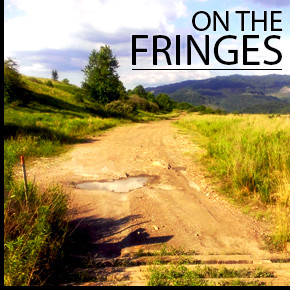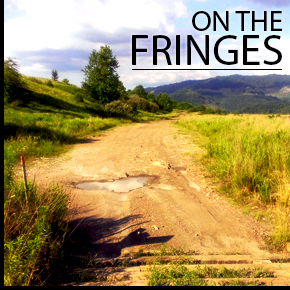 Belize for the summer, Africa for spring break, the Philippines during winter break, and the list of medical mission opportunities goes on and on at most medical schools. Now, don’t get me wrong; I absolutely love mission trips and all of the great work that certain groups like the Christian Medical and Dental Associations and other mission-oriented organizations do for the cause. However, I feel that one vital area that definitely qualifies as a “medical mission” gets overlooked frequently, and it’s right in our own backyard of America — the rural Appalachian region.
Belize for the summer, Africa for spring break, the Philippines during winter break, and the list of medical mission opportunities goes on and on at most medical schools. Now, don’t get me wrong; I absolutely love mission trips and all of the great work that certain groups like the Christian Medical and Dental Associations and other mission-oriented organizations do for the cause. However, I feel that one vital area that definitely qualifies as a “medical mission” gets overlooked frequently, and it’s right in our own backyard of America — the rural Appalachian region.
Few people recognize that it spans from the southern aspect of New York all the way down to the northern aspects of Georgia, Alabama and Mississippi. Very rich in both culture and history, rural Appalachia has such distinctiveness that courses could — and in my opinion, should — be taught on how to medically treat the people in this area.
My wife and I are proud products of Appalachia, and when it was time for us to choose graduate programs, choosing ones that focused on rural medicine was a must. I chose Lincoln Memorial University’s DeBusk College of Osteopathic Medicine, and she chose Frontier Nursing University. In 2017, she and I are on track to graduate with a master’s degree in Family Nursing Practice and a DO, respectively. Afterward, we will set up close to our hometown in a rural Appalachian area to practice. I am on a scholarship from Georgia that requires me to serve in a rural area of Georgia for each year they pay on my tuition. My wife has plans to seek a similar program, but for loan repayment. What’s not to like? Why aren’t more programs like this out there to encourage more medical professionals to serve in the Appalachian region?
Each year I watch as people who are originally from the rural Appalachian area get degrees in the medical profession, only to leave and practice in bigger cities. Appalachia has issues that are in dire need of medical intervention. Let’s take a look at the politically-charged hot button topic of mountaintop mining, or MTM. MTM is a highly invasive mining procedure that uses machinery and powerful explosives to remove mountaintops in order to reach underlying coal. Unfortunately, this process also produces toxins in the environment very quickly — especially into waterways. One does not need to be politically-minded, or have a strong opinion on the matter, to admit that the resultant sludge in the environment from MTM tactics is harmful to the nearby citizens. Furthermore, chronic conditions such as black lung, also known as coalworker’s pneumoconiosis, and “Mountain Dew mouth,” as was recently featured on NPR, demonstrate the prevalence of both persistent and brand new problems co-existing in Appalachia that need our immediate medical intervention.
According to “Appalachia: Where Place Matters in Health,” several alarming issues exist in Appalachia that scream for our immediate attention. For instance, the area with greatest documented tobacco use in America rests within Appalachia. The importance of deep-seated and intertwined religious beliefs within some factions of the Appalachian culture may discourage the seeking of medical advice in some instances due to a sense of fatalism spawned from the “God’s will” mentality. For instance, Jamie Coots, pastor from the reality show “Snake Salvation” on the National Geographic Channel, recently died from a snake bite. He refused medical service, as many snake-handling church goers do if bitten; often, medical attention is refused in order to let “God’s will” take place. This article will not condemn nor condone this mentality; however, I do feel it necessary to say that medical accessibility should be readily available for those who would like to seek medical attention in case of a snake bite during religious services. The aforementioned document also states “most of Appalachia is rural.” As such, few industries and jobs are available. One dilemma many Appalachians face, is that the few industries existing there may also be responsible for the high “cancer cluster” areas; however, environmental action may be deterred because pursuing it would give rise to the old adage of “biting the hand that feeds.”
So when we say “medical missions,” we must begin considering the needs right here in our own backyards. With such a distinctive culture, history, and conglomeration of medical needs, Appalachia deserves its own focus and pipeline of healthcare professionals. However, merely being aware of the need in Appalachia isn’t enough. In order to devise a more sustainable solution, Appalachia requires healthcare professionals who have a strong desire to serve in the area. In addition, more incentive programs, such as the one in which I am currently participating, must be created and in order to usher change into the future.
If more Appalachian loan repayment programs existed, then this would help mitigate the disparity of healthcare providers. The current “rural” and “underserved” programs have been unsuccessful in supplying more medical assistance to the Appalachian region because they are not specific enough to address this area. Currently, most loan repayment programs are for time served within medically-underserved areas (MUAs). The problem with this wording is that a heavily-populated area may also qualify for these loans if the percentage of physicians available per person is deemed too low. Therefore, the language for newer incentive programs must prove to be Appalachian-specific in order to effectively address the issues in Appalachia. If Appalachian-specific incentives are not in place, then one of two situations may emerge: medical staff will continue to go elsewhere where they can make more desirable incomes, or rural programs in place will continue to function in non-Appalachian areas.
Some people may wonder why zealous medical professionals originally born in Appalachia continue to leave the area in which they were raised to “seek a greater income” in larger cities rather than returning home. There is a misconception that medical professionals are choosing non-Appalachian areas for personal gain and selfish motives. However, the case is often that the medical professionals are forced to go into practice elsewhere because the compensation they would receive in an Appalachian region would not be enough to cover their high student loan debt and the minimal cost of living. One cannot fairly expect people to live in poverty just to serve in the Appalachian region while they witness their colleagues making much more by practicing in cities. As mentioned earlier, we must institute Appalachian-specific incentives.
In conclusion, I hope this article has accomplished two goals. Primarily, I hope that the terms “missions medicine” or “medical missions” will now begin conjuring thoughts of Appalachia, as compared to their previous, and almost exclusive, usage to denote international missions. Secondly, I hope that this article will stimulate more discussion about the dire need for Appalachian-specific incentive programs for physicians, which would thereby correct the vague design of the current programs that just address “rural areas” in general. Appalachia has far proven its distinctiveness, and well-deserved need for its own programs. If more students were given an opportunity like I have been given that is specific to Appalachia, then new issues that seem to be isolated to the Appalachian region could be further mitigated.
On the Fringes is devoted to filling the missing pieces of medical school and the art of medicine, topics of discussion in medical education that are often overlooked, under-discussed, or brand new.




